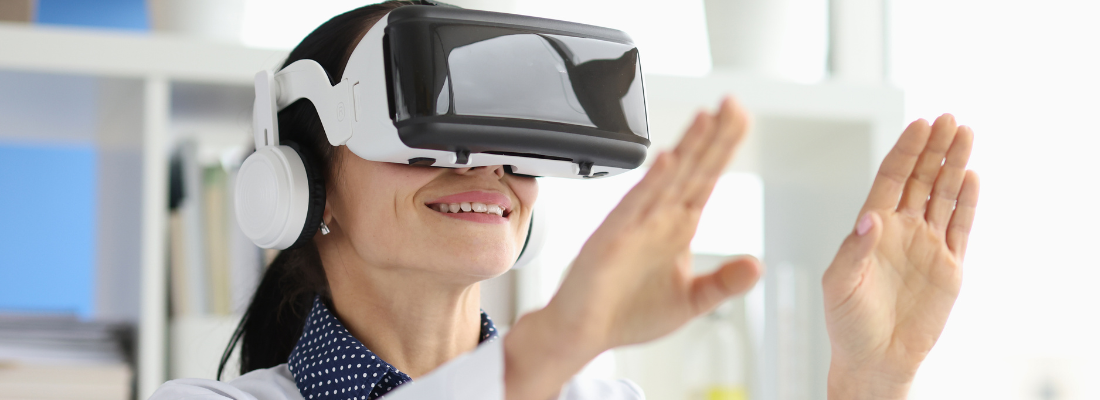We all face health risks in our daily lives , particularly in the wake of the global coronavirus pandemic. Breathing in clean air is an essential part of anyone’s wellbeing, making the indoor air quality of offices, schools, healthcare centers and buildings in general an important factor in living a healthier life. It’s also a human right; access to a clean, healthy and sustainable environment, which includes the right to breathe clean air, was declared a human right by the United Nations declared in July 2022.
“Indoor air quality is a very important part of your working environment; there’s plenty of stuff floating around that could potentially be dangerous”, says Professor Dr . Daniel Bonn, professor of physics at the University of Amsterdam and chair of the newly formed Indoor Air Quality Society (IAQS), a not-for profit Association of academics, companies and institutions, whose objective is to promote the exchange of information, knowledge and expertise on the serious and indeed increasingly life-threatening and multi-facetted problem of polluted indoor air. The aim of this network is to raise awareness and education, as well as to influence public policy. In a nutshell, to implement the United Nations Goal and achieve the human right to breathe healthy air.
But how can we measure indoor air quality, why should we and what do we do with the data when we have it?
What is the definition of indoor air quality?
Essentially, air quality is everything that is in the air around you. There are several factors that affect indoor air quality including small particles known as smog, levels of CO2, and volatile organic compounds (VOCs).
Every building has oxygen and nitrogen, but there will also be various other air pollutants depending on where the building is located. If it's in an urban area for example, pollution from car exhaust fumes like fine dust, NOx and CO2 will also affect the air quality in buildings.
“It’s very important these levels don’t get too high. High levels of CO2 make you less reactive, while NOx and fine dust are dangerous poisons,” says Prof. Bonn. Some buildings may also have poor indoor air quality due to VOCs. Typically, this would be formaldehyde from your book cupboard or other indoor equipment – another pollutant you don’t want too much of.
All of that is part of indoor air quality and is very important for a pleasant and safe working environment. Therefore, being aware of what levels are classed as ‘too high’ and what measures can be taken to improve indoor air quality in your building or workplace, is essential.
How can I measure indoor air quality?
While it may seem difficult to measure so many different pollutants in the air around us, it’s actually very straightforward. There are various kinds of sensors available and for €100-150, you can have a complete air quality monitoring system.
These sensors will measure all the major components that are important – small particles, fine dust, CO2, VOCs, as well as any others from outside that may pollute the air quality in offices if windows are opened.
The question is what do you want to do with the information you get from that system?
Why should I measure indoor air quality?
Since we spend a substantial amount of time inside buildings – whether that be working or living – it's increasingly important to measure indoor air quality. It tells you everything you need to know about the wellbeing of the working environment.
While ensuring the quality of wellbeing in a workplace, be it an office, a school, a hospital or other healthcare buildings, is high on the list of priorities for many companies and facility managers, indoor air quality is not necessarily looked at. But it should be.
“According to the World Health Organization (WHO), more people die from fine dust than from cigarette smoking. That’s a very alarming warning from the WHO that we should really do something with,” says Prof. Bonn.
The good news is that air quality monitoring is an easy, continuous process.
“But we need to know what we want to do with the information we get from measuring indoor air quality,” Prof. Bonn adds. “This will depend on what buildings you are measuring. One possible analysis is to look at whether the air quality is better or worse. Or, if you open a window or not, does the HVAC system of the building contribute to eliminating fine dust?”
For example, there are now many CO2 sensors in schools and the teachers know that if these sensors go above a certain value, they should either ventilate the environment or send the children outside. Similar measures could be taken in office or healthcare environments.
The varying outcomes from different environments also depend on what you want to achieve. For example, measuring and ventilation in schools was installed because of the coronavirus pandemic in order to help prevent COVID-19 infections. It’s also known that if you ventilate, the CO2 levels go down and the attention of the pupils increases.
However, when measuring air quality in hospitals for example, you may want to measure airborne viruses, or bacteria or fungi. As soon as you’ve established the rules, the rest is easy.
Understanding the hazards of poor air quality in schools, hospitals, offices and other buildings is the first step in identifying the appropriate actions to take.
Can you improve indoor air quality?
The WHO has released guidelines on what a good working environment is or should be, making it easier to know where to start when it comes to looking at improving indoor air quality.
There are several things that can be done to make significant improvements to the air quality in a workplace but the easiest thing, Professor Bonn says, is to regularly replace the filters in the building’s heating, ventilation, and air conditioning (HVAC) system, which most buildings have. The filters in these systems can add to the dust pollution and even fungi, so ensuring they’re replaced regularly is an easy win.
The capacity of the HVAC system can also be changed, however there are certain factors to consider before doing this. For example, if you want to bring more outdoor air inside, you will most likely need to heat this outdoor air up in the winter, depending on the climate, and this obviously has an energy cost.
“There’s an optimum for the air quality and energy efficiency of a building or workplace that will be different for every building, but that doesn’t mean there are no general rules of what a facility manager should do to create a healthy working environment,” Prof. Bonn explains.
Stand-alone systems to improve indoor air quality
Every building has its own air circulation system but if that’s not sufficient, you could supplement this with a stand-alone air purifying system. There are systems that target viruses in the air or that remove everything from the air including fine dust, helping to significantly improve indoor air quality in offices, especially in old buildings where the original system isn’t good enough.
Three systems for improving indoor air quality
When it comes to improving indoor air quality, there are three common air cleaning systems that have been tested and approved.
- 1. HEPA (high efficiency particulate air) - Said to theoretically be able to remove almost all dust, pollen, mold, bacteria and some airborne particles
- 2. UV-C - Short-wave ultraviolet energy disinfection lamps and lights that reduce aerosols, bacteria and viruses
- 3. Plasma Air – Uses bipolar ionization technology to purify indoor air
Each system has different working and physical principles in how they clean the indoor air, but the outcomes are the same.
Indoor air quality system maintenance
No matter which system you choose, maintenance is minimal. HEPA air purification systems have heat pad filters which require regular replacement, but UV-C and Plasma Air don’t require any maintenance.
Whatever the goal, a system should be chosen based on the needs. Generally, this requires looking at the function of the building and figuring out what the goal is. Different goals require different solutions.
The future of indoor air quality
In a modern world where pollution continues to be a growing problem, our health and wellbeing are always at risk. More and more people are suffering from sick building syndrome – a direct result of working in buildings with high levels of unpleasant and or dangerous substances. And as the airborne virus discussion continues thanks to the presence of COVID-19, more people are paying attention to the quality of the air we breathe. A greater interest in the matter is fueling constant new innovations in what is already a very high-tech area.
Prof. Bonn concludes: “Many people are worried about cleaning surfaces and floors etc., but hardly anyone thinks about cleaning the air, but this is changing. There’s a great future for indoor air quality and air cleaning that should supplement the normal cleaning and hygiene routines that facility managers already have in order to provide a better-quality workplace – and life – for all.”
The newly formed collaboration between Interclean and IAQS will enable us all to share knowledge and educate a larger public. We believe that collaboration is the way to go forward.







